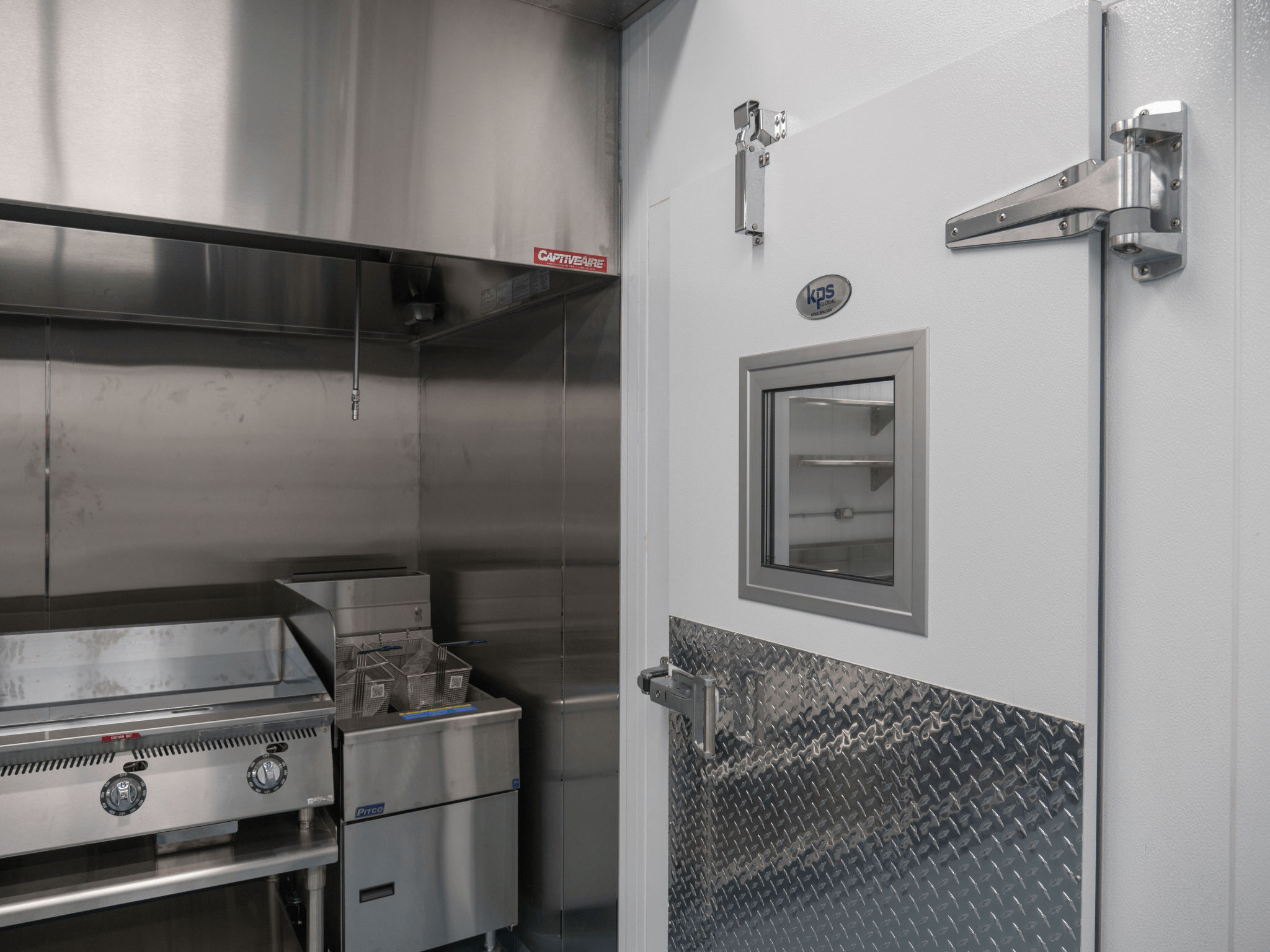Overview
The design and construction of walk-in coolers and freezers is regulated by NSF to ensure food storage areas are constructed with the appropriate materials for the environment. These materials need to be free from substances and construction methods that risk contaminating food from harmful microbiological organisms that would endanger the health of consumers.
The NSF was established to standardize sanitation and food safety standards in the United States. For more information on NSF, check out our NSF Certifications Related to Walk-in Coolers and Freezers blog.
Standards
NSF/ANSI 2 and 52 Standards
NSF/ANSI standards 2 and 52 have been established to protect food from materials and equipment used within walk-in coolers and freezers. The standards require that materials must resist normal wear, guard against vermin and protect food from contaminating substances used in the operation and cleaning of the walk-in space and its food handling/processing equipment.
NSF/ANSI 2 Standard - Food Equipment
The purpose of the NSF/ANSI 2 standard is to establish minimum food protection and sanitation requirements for the materials, design, fabrication, construction and performance of food handling and processing equipment. Equipment covered by this standard includes, but is not limited to bakery, cafeteria, kitchen and pantry units and other food handling and processing equipment such as tables and components, counters, hoods, shelves and sinks.
The requirements contained in this section are intended to protect food from contamination and ensure that the materials used in the manufacture of food handling and processing equipment resist wear, penetration by vermin and the effects of foods, heat, cleaning compounds, sanitizers and other substances that may contact the materials in the intended use environment.
Typically walk-in surfaces not in food zones are exempt from this standard. However, walk-in surfaces such as walls and joints in the ‘splash zone’ of adjacent food processing and handling would be subject to the NSF/ANSI 2 standards. Work areas such as meat cutting tables adjacent to walk-in walls or sinks attached to walk-in walls would fall within the standard. These splash zone surfaces along with non-food zone surfaces, such as walk-in walls/joints and floors shall be accessible and easily cleanable. Permanent joints and seams in a food or splash zone shall be sealed and smooth. Permanent joints and seams in a nonfood zone shall be closed.
NSF/ANSI 52 Standard – Supplemental Flooring
The NSF/ANSI 52 establishes minimum sanitation and food safety requirements for the materials, design and manufacture of supplemental flooring intended for use in food preparation, dry storage and ware washing areas.
General purpose and heavy-duty supplemental flooring such as DTA (diamond tread aluminum) overlay shall be designed and manufactured to prevent the harborage of vermin and the accumulation of dust, dirt, splash or spillage, and to facilitate maintenance, service and cleaning. Supplemental flooring shall be designed so as not to buckle, curl or warp during use or following cleaning performed in accordance with the manufacturer’s recommendations.
Materials shall meet the following requirements and use conditions.
- Supplemental flooring materials shall not support the growth of microorganisms.
- Materials shall be resistant to deterioration.
- Supplemental flooring shall not absorb water or oil.
- Supplemental flooring shall not be detrimentally unstable at use and cleaning temperature.
- Supplemental flooring shall meet the appropriate performance requirements for tensile strength and tear resistance.
Conclusion
The NSF/ANSI 2 and 52 Standards were established to prevent the contamination of foods in refrigerated spaces where they are processed and stored. The goals of the Standards are:
- To ensure food processing equipment and its zones within walk-in coolers and freezers are constructed with materials that are appropriate for the environment where they are used and that their surfaces are readily cleanable.
- To ensure supplemental flooring used in walk-ins, such as DTA overlays are easily cleanable and do not risk contaminating food from harmful microbiological organisms seeking to live in the joints or beneath the supplemental floor surface.
Contact the team at KPS Global who are knowledgeable about NSF standards as it relates to walk-in coolers and freezers.
Citation: NSF/ANSI 2 (2019) “Food Equipment”, NSF International Standard/American National Standard, Ann Harbor, MI, www.nsf.org.
Citation: NSF/ANSI 52 (2019) “Supplemental Flooring”, NSF International Standard/American National Standard, Ann Harbor, MI, www.nsf.org.



